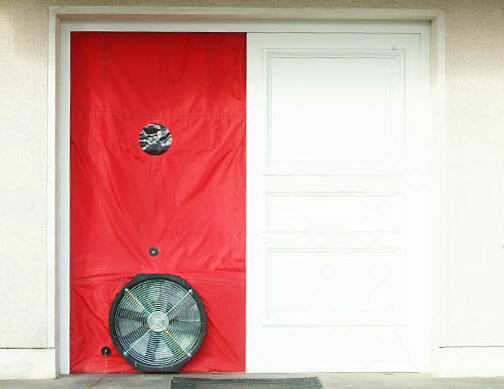Air permeability testing is a vital part of the building process in which the result helps to determine the energy efficiency of a building or structure. An air tightness test shows the air leakage of a structure and therefore shows us how it can affect the energy performance.
What Is An Air Permeability Test?
Key Points Of An Air Permeability Test:
In April 2002, legislation was introduced by the UK government which aimed to enforce high standards of air tightness in new builds. The testing methods enforced were set out by ATTMA (Air Tightness Testing and Measurement Association). ATTMA was officially recognised and authorised by the government to create standards of air permeability testing. The method ATTMA TSL1 was created for dwellings, where as ATTMA TSL2 was required for non dwellings.
How Is An Air Permeability Test Conducted?
An air permeability test takes the area of a building envelope and measures the air leakage leakage rate. The air leakage rate is measured per hour per square metre by specialist equipment. An air permeability test requires blower door testing equipment. The door testing equipment is placed on an external opening, usually the front door. This blower door equipment is essentially a large fan. Moreover, the equipment is used to pressurise the building at different pressures. The level of air leakage is measured to determine the efficiency of the building.

There are three levels of air tests, which vary depending on the building type. We tend to focus our tests on level 1 air permeability tests.
A level 1 test is used for single or smaller dwellings up to a 4000m³ and typically involves just a single door blower, which applies for most buildings tested as each dwelling is normally less than 4000m³.
Ways To Improve The Results Of An Air Permeability Test
There are many ways to improve the results of an air permeability test. The planning process is vital in ensuring that a building meets air permeability standards. Furthermore, constant inspection throughout the project can also help to improve air leakage rates. An air tightness strategy is vital in achieving high standards. Below are some ways to improve the results of an air permeability test.
Seal Waste Pipes
Quality Check Windows & Doors
Take Care With Light Fittings
Reduce Air Leakage In Cupboards & Loft Hatches
Quality Check Radiator Pipes & Manifolds
Test Multiple Times
An air permeability test is an important stage of a building development and therefore special care and attention must be taken to ensure high standards. A building that is energy efficient would require less energy to run and therefore would have lower running costs. The reduction of energy usage is better for the environment, which is why much importance is placed on air permeability testing. A benefit to the introduction of air permeability standards is that the overall quality of build will need to be higher, which enhances living conditions for the inhabitants.
Featured Case Studies
Get In Touch



